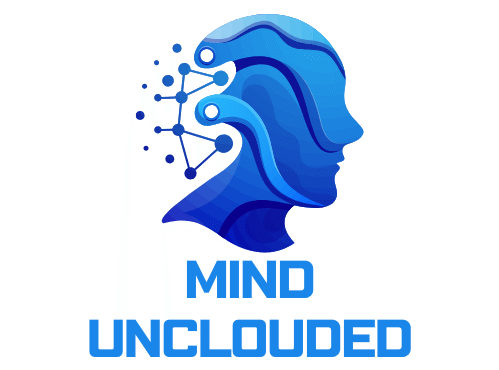Introduction
Depression manifests in various forms, and not every individual’s experience aligns neatly with established categories like major depressive disorder or persistent depressive disorder (dysthymia). In certain situations, such as emergency settings or when comprehensive information isn’t available, clinicians may diagnose unspecified depressive disorder. This classification, outlined in the DSM-5 (Diagnostic and Statistical Manual of Mental Disorders, Fifth Edition) — the authoritative guide used by mental health professionals worldwide — acknowledges significant depressive symptoms that don’t fully meet the criteria for specific disorders.
As a mental health professional with clinical experience, I emphasize the importance of this diagnosis because it ensures individuals receive appropriate care even when their symptoms don’t fit traditional labels.
This article delves into the nuances of unspecified depressive disorder, exploring its symptoms, causes, and treatment options to provide a comprehensive, expert overview for those seeking clarity on this often-overlooked condition.
Understanding Unspecified Depressive Disorder
Clinically, unspecified depressive disorder is recognized as a legitimate diagnosis when someone experiences significant depressive symptoms causing distress or impairing daily functioning but doesn’t meet the full criteria for specific conditions like major depressive disorder or persistent depressive disorder (dysthymia). This classification, outlined in the DSM-5, is often used in situations where there’s insufficient information for a precise diagnosis, such as in emergency settings. It acknowledges the presence of depressive symptoms without specifying the exact type. This approach reflects current expert consensus in psychiatry and highlights the importance of addressing all forms of depression to provide timely and effective care.
Diagnostic Criteria and Challenges
Diagnosing unspecified depressive disorder presents unique challenges. Unlike major depressive disorder, which requires at least five specific symptoms over two weeks, this category is used when depressive symptoms cause significant distress or impairment but don’t meet full criteria for other depressive disorders. Clinicians may resort to this diagnosis when information is limited, such as in emergency settings. This approach is endorsed by leading psychiatric associations to ensure no patient is left untreated due to diagnostic uncertainty.
However, the lack of specific criteria can lead to diagnostic challenges, emphasizing the need for comprehensive, individualized clinical assessment by trained professionals to capture the unique presentation of each patient accurately.
Etiology and Risk Factors
The causes of unspecified depressive disorder are multifaceted, involving a combination of biological, psychological, and environmental factors. Extensive research in psychiatric genetics and neurobiology confirms that genetic predisposition plays a significant role; individuals with a family history of depression are at a higher risk. Neurochemical imbalances, particularly in neurotransmitters like serotonin and dopamine, can affect mood regulation, contributing to depressive symptoms. Psychological factors such as low self-esteem, chronic stress, or a history of trauma increase vulnerability.
Environmental influences, including significant life changes, social isolation, or lack of support systems, also contribute to depressive symptoms. In cases of unspecified depressive disorder, these factors may present in ways that don’t align neatly with specific diagnostic criteria, underscoring the importance of a holistic clinical approach grounded in current psychiatric research.
Comorbidities and Differential Diagnosis
Individuals with unspecified depressive disorder often experience co-occurring conditions that complicate diagnosis and treatment. Common psychiatric comorbidities include anxiety disorders, substance use disorders, obsessive-compulsive disorder (OCD), and post-traumatic stress disorder (PTSD). These overlapping symptoms can obscure the clinical picture, making accurate diagnosis challenging.
Additionally, medical conditions such as thyroid disorders, diabetes, and cardiovascular diseases can present with depressive symptoms, necessitating thorough medical evaluations to rule out underlying physical causes. Accurate differential diagnosis, as recommended by clinical guidelines from the American Psychiatric Association, is essential to distinguish unspecified depressive disorder from other mood disorders, ensuring appropriate and effective treatment planning.
Treatment Approaches
Treating unspecified depressive disorder typically involves a combination of psychotherapy and medication. Cognitive Behavioral Therapy (CBT) and Interpersonal Therapy (IPT) are evidence-based psychotherapies with strong support from clinical trials and meta-analyses demonstrating their efficacy in treating depression. Medications such as Selective Serotonin Reuptake Inhibitors (SSRIs) or Serotonin-Norepinephrine Reuptake Inhibitors (SNRIs) may be prescribed to regulate mood effectively. In treatment-resistant cases, Transcranial Magnetic Stimulation (TMS) offers a non-invasive alternative.
Additionally, lifestyle changes like regular exercise, adequate sleep, and a balanced diet have been scientifically validated to support overall mental health. It is critical to collaborate closely with qualified healthcare providers to develop a personalized treatment plan that addresses each patient’s unique needs, a practice widely endorsed in psychiatric care.
Prognosis and Long-Term Management
The outlook for individuals with unspecified depressive disorder varies. With appropriate treatment, many experience significant improvement. However, untreated or inadequately managed symptoms can lead to chronicity, increasing the risk of developing more severe forms of depression. A comprehensive treatment plan, combining medication and psychotherapy, is often effective. Selective Serotonin Reuptake Inhibitors (SSRIs) and Cognitive Behavioral Therapy (CBT) remain cornerstone treatments.
Lifestyle modifications, such as regular physical activity, balanced nutrition, and adequate sleep, also play a crucial role in long-term management. Longitudinal studies by mental health experts emphasize the importance of ongoing monitoring and tailored interventions to reduce relapse risk and enhance quality of life.
Conclusion
Unspecified depressive disorder is a valid diagnosis for individuals experiencing significant depressive symptoms that don’t meet the full criteria for other depressive disorders. Recognizing and addressing these symptoms is crucial, as untreated depression can lead to chronicity and increased risk of more severe conditions. With appropriate treatment, including psychotherapy, medication, and lifestyle modifications, many individuals can manage their symptoms effectively. It’s essential to approach each case individually, considering the unique circumstances and needs of the person affected.
If you or someone you know is experiencing symptoms of depression, seeking professional help from licensed mental health providers is the first and most important step toward recovery. Remember, support is available, and treatment can lead to significant improvements in quality of life.

